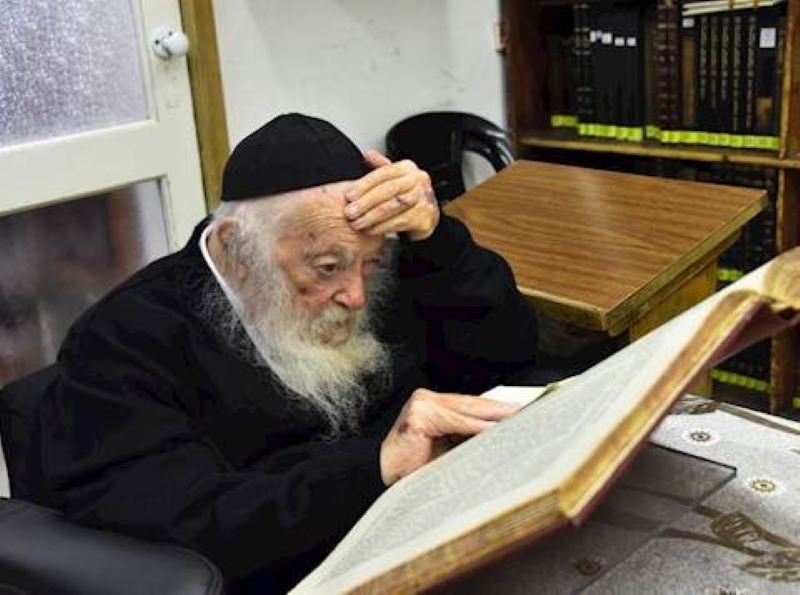by Rabbi Yair Hoffman for 5tjt.com
It was why Yaakov Avinu married Leah prior to his marrying Rochel, and it is something that comes up over and over again.
Yet, notwithstanding its frequency, people have only vague ideas of when it is okay for a younger sibling to marry first and when it is not. Some people wonder about the actual source of the practice. Others aren’t sure as to the parameters of to whom it applies.
Maran Rav Chaim Kanievsky zatzal ruled that if the younger sibling does end up dating first it should not be done at the beshest of the parents. Rather, it must be the child’s idea. If the younger sibling does bring up the issue – the parents should then assist (see Teshuvah 132 in Rav Chaim on Shidduchim).
There are, however, four frequent questions that people have regarding a younger sibling marrying before an older one:
- What is the source of this halacha or practice?
- To whom exactly does this concept apply?
- Is it a halacha? Or is it just a good and nice thing to do?
- Are there, in fact, any exceptions to this rule?
THE SOURCE
The Rashbam (Bava Basra 120a) understands the pasuk in Bereishis, “It shall not be done thus in our place – to give the younger one [in marriage] before the older (Bereishis 29:26)” as the source for the Halacha.
There is a second possible source as well, the daughters of Tzlafchad in Bamidbar 27. Machlah, Noa, Hoglah, Milkah, and Tirzah either got married in age order or in order of wisdom. According to the commentaries that understand it as age order, this is a source for our concept.
A third source may be from Rabbeinu Tam’s understanding of the Gemorah in Kiddushin (52b). He writes that when a person says, “Your daughter is engaged to me” to a person who has two daughters, the marriage is effective and the intent is to the eldest daughter on account of the verse in Bereishis 29:26.
TO WHOM DOES IT APPLY?
The idea applies to both older brothers of brothers and older sisters of sisters. It is interesting to note that it only applies to the members of the family. In other words, it is perfectly permitted for a suitor to date the younger sibling. The issue is just on the younger sibling but not on the would-be spouse.
Regarding the older sister of a younger brother, there appears to be a debate among the Poskim. The Bach (YD 244) seems to forbid it, while the Maharsham is lenient. The Chelkas Yaakov (Vol. I #125 cited by HaNesuim K’hilchasam) states that the custom is to be stringent.
Regarding the older brother of a younger sister, there also appears to be a debate. The Igros Sofrim (#29 citing the Chsam Sofer) is stringent. However the Chazon Ish and the Steipler Gaon (Orchos Rabbeinu Vol. page 281) were both lenient in such a case.
What about twins? Does the issue apply to an older twin as well? The Shulchan HaEzer Vol. I 45:3 states that the issue remains a question.
IS IT A HALACHA?
There are numerous Poskim who state that the entire concept of waiting for a sibling is, in fact, not an actuall halacha, but rather a matter of Derech Eretz, or appropriate ethical behavior. The Chsam Sofer in a responsa (Vol. VII #23) rules in this manner. Yet we also find Poskim that understand this concept as an out and out halacha. This is the indication of the TaZ (YD 208:1), that it is in fact a full halacha.
THE EXCEPTIONS
Yes, there are actually some nine exceptions to the concept.
- When the siblings do not live in the same country. We need to explore what the parameters of this actually are, however. Some Poskim apply this leniency even further, stating that it applies to siblings not residing under the same roof (See Shulchan HaEzer 47:1).
- When the older one agrees to it, Rav Moshe Shternbuch (Vol. I #739) permits it. However, if the older sibling has pain from it, then it is not permitted.
- The Maharsham (Vol. III #136) writes that when the daughter has reached a mature age, the age of 22, it is permitted.
- If the older sibling is not following in the path of the Torah, it is also permitted according to the Einayim L’Mishpat, Kiddushin 52a as cited in HaNesuin K’hilchasa 1:54.
- The aforementioned Maharsham allows it when the younger one went ahead and started dating.
- When the older sibling is not agreeing to get married by choice. The aforementioned Maharsham entitles this leniency as “Bshaas Hadchak.”
- When the older sibling has an illness which makes it difficult for him or her to find a shidduch, this is also termed b’shaas hadchak and the Maharsham permits the younger sibling to date.
- When the parents are not paying for the wedding at all and it is done by the children, the Beis Yechezkel (Siman 60) is lenient.
- Some Poskim are lenient whenever there is somewhat of a need, tzorech ktzas (Maharash Engel Vol. VI #102; Minchas Elazar Vol. I #163). What would somewhat of a need mean? It would seem that these Poskim hold that if there is any need to do so above that of the regular desire to get married – it would be permitted.
It should be noted that the Shulchan HaEzer (Vol. I Siman 47:1) states that regardless of the heterim, it should only be done after consultation with a Bais Din. Others permit it after consultation with a known Gadol and Posaik.
RAV MOSHE FEINSTEIN’S APPROACH
Rav Moshe Feinstein zt”l (Igros Moshe Even HoEzer Vol. II #1) has an entirely different approach to the concept discussed. He writes that, regarding brothers, this issue is only in regard to two of them that have someone available that they can each marry. Under such circumstances, the elder one is to be married first. However, when a younger brother has someone available and the older sibling does not – then this issue does not arise at all and it is permitted lechatchilah – ideally.
Rav Feinstein then states that in regard to two sisters, it is not a halacha, but just a minhag. This author’s family member, in fact, had consulted Rav Feinstein on a case of two sisters and his response was rather lenient.
The Maharash Engel (Vol. VI #102) actually agrees with the position espoused by Rav Moshe zt”l. Nonetheless, the majority of Achronim do not understand the concept in the manner that Rav Moshe does. The issue seems to revolve around how to read the words of the Shach (YD 244:13).
CONCLUSIONS
As in many areas of halacha, we find three important notions here. The first is that there is a wide range of divergent opinions. The second is that we should always have a Posaik or Moreh Horaah that will guide us as we travel down the path of life. The third conclusion is, like much of halacha, there are moral and ethical considerations in every path and decision that we embark. The goal is to do things in a manner that does not hurt people.
The author can be reached at [email protected]
To read more Torah from Rav Chaim zatzal go to orchotyosher.org












3 Responses
“Yet we also find Poskim that understand this concept as an out and out halacha. This is the indication of the TaZ (YD 208:1), that it is in fact a full halacha.”
Could you please explain what in the Taz’s words indicates that it is a Halacha, on the contrary the Taz merely says that if someone married off his daughter without specifying which, perhaps we can assume he followed the common practice of marrying off the older one first.
Also, “The Rashbam (Bava Basra 120a) understands the pasuk in Bereishis, “It shall not be done thus in our place – to give the younger one [in marriage] before the older (Bereishis 29:26)” as the source for the Halacha.
There is a second possible source as well, the daughters of Tzlafchad in Bamidbar 27. Machlah, Noa, Hoglah, Milkah, and Tirzah either got married in age order or in order of wisdom. According to the commentaries that understand it as age order, this is a source for our concept.”
Is not accurate. the Rashbam is explaining the story of Bnos Tzlafchad. So, first of all, it’s only a single source. Secondly, the Rashbam is not citing a “Halacha”, merely explaining why we would assume they married in age order; as there was a known custom to do so.
Also, “Regarding the older sister of a younger brother, there appears to be a debate among the Poskim. The Bach (YD 244) seems to forbid it”
Is unclear to me. The Bach does not appear to say any such thing, on the contrary, he says
אם אחים
או
אחיות יעשו להם נישואין אף על גב שאחד גדול מחבירו בחכמה לא יקדימו לעשות נישואין לקטן בשנים מפני שהוא גדול בחכמה אלא יקדימו לעשות נישואין לגדול בשנים אף על פי שהוא קטן בחכמה.
From the word OR, it implies that it only applies when the relevant siblings are all boys or all girls.